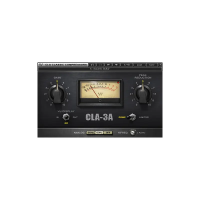The patching scheme in this case will look like this:
Insert a mono De-Esser, REQ and L1 Limiter on a vocal track as described in the “Using an effect chain as
a mono channel insert” section, and then use an auxiliary to insert a stereo TrueVerb as described above.
This will sound close to using all these effects in stereo, but will use less DSP resources.
Try using the AW’s buses to route several channels to one Y56K effect chain. This is a great way to send
drum tracks through TrueVerb to “put them in a room”.
Using the Y56K’s lightpipe I/O
The Y56K can act as a lightpipe (or ADAT) I/O card for the AW’s channels and also apply its effects to audio
arriving over the Y56K’s lightpipe from the ADAT or to audio sent over its lightpipe to ADAT.
In the effect chain, select ADAT as the audio source from the Y56K Main SRC column to direct the specific
effect chain pair to “listen” for audio on the Y56K’s lightpipe input.
All audio received by the Y56K is echoed (post the effect chains) to the card’s lightpipe output.
Patching lightpipe input
Verify that the Y56K effect chain’s SRC is set to ADAT so the effect chain processes audio from the Y56K’s
ADAT input.
Y56K User Guide
24

